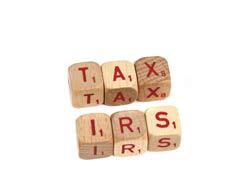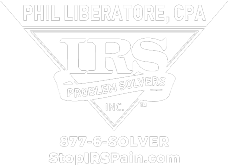Create a tax-saving plan to reduce your 2016 tax bill
Contrary to what you may have heard, there is one sure way to reduce your tax bill: Create a tax-saving plan. And here’s more good news — you still have time to establish and implement your plan before the end of the year. Consider these suggestions as you put your plan together.
Make use of tax deferral strategies
Participating in a retirement plan is a tax deferral strategy with a double benefit. You get to put off paying federal income tax on money you earn currently and you can also put off paying tax on the income earned on the money you deposit in your plan. That’s true for a plan you participate in at work, such as a 401(k), a plan you establish for your own business, such as a Simplified Employee Pension (SEP) plan, and an account you set up with income earned from wages, salaries, and tips, such as an Individual Retirement Account (IRA).
Investors can employ the tax deferral strategy too. A simple method is to wait to sell investments that have appreciated in value until your holding period exceeds a year. At that point, you can benefit from long-term capital gain rates, which generally max out at 20%. Alternatively, you can wait to sell until you can offset gains with losses from other investments. Of course, you’ll want to balance this tax-saving strategy with sound investment decisions.
Reduce your taxable income
On your personal income tax return, expenses you can deduct “above-the-line,” standard or itemized deductions, and allowable exemptions for yourself and your family members can all reduce your taxable income. For example, if you’re a teacher, you may benefit from the $250 above-the-line deduction for expenses you pay out of pocket such as books and supplies. In addition, this year you can also deduct your expenses for professional development. Above-the-line means the deduction is available even if you don’t itemize.
The last quarter of the year is also a good time to sum up your outlays for expenses that qualify as itemized deductions. These include taxes, home mortgage interest, and charitable contributions, and are generally deductible in the year you pay them. Totaling how much you’ve already paid will show you if you have enough to itemize, or if you might want to consider accelerating or postponing expenses to shift the deductions into the current or future year, whichever gives you the bigger tax benefit.
Tip. If you’re age 65 or older, under current law, 2016 is the last year the 7.5% threshold for medical expenses is available. Starting in 2017, your medical expenses will need to exceed 10% of your adjusted gross income in order to claim a deduction. If you’re close to meeting the threshold this year, you may want to renew prescriptions before the end of the year, or schedule routine doctor visits.
Are you a business owner? Changes to the Section 179 depreciation expensing election can help you claim bigger deductions this year. One change to be aware of is an expanded definition of Section  179 property, which now permanently includes computer software and real property such as qualified leasehold and retail improvements, and restaurant property. Another change to note: Air conditioning and heating units are now eligible for Section 179 expensing.
179 property, which now permanently includes computer software and real property such as qualified leasehold and retail improvements, and restaurant property. Another change to note: Air conditioning and heating units are now eligible for Section 179 expensing.
Benefit from credits
Credits can reduce your personal and business taxes dollar for dollar — one reason they’re valuable enough to warrant giving special attention to the details. As an example, if you plan to claim the American Opportunity Tax Credit or other education credit this year, be aware you’ll need a copy of the information statement (Form 1098-T) sent by your school. This year, schools are generally required to report on Form 1098-T only the tuition and qualified expenses that you actually paid. However, you may buy books and credit-eligible materials from a supplier other than your school. Those costs would not be on the Form 1098-T that you receive. To include the expenses in the calculation of your tax benefit, keep receipts as proof of your payments.
Some “green” cars still qualify for federal tax credits too. When you buy a new personal or business plug-in electric drive vehicle in 2016, you may qualify for a credit of as much as $7,500. Eligible vehicles include cars, light trucks, and motorcycles. In general, the vehicle must be under 14,000 pounds and powered by a rechargeable electric motor. There’s also a credit for fuel cell motor vehicles, which are powered by cells that convert chemical energy into electricity. The base credit is $4,000 for vehicles weighing less than 8,500 pounds.
Avoid penalties
A good way to save tax dollars is to avoid paying extra because of missed deadlines or mistakes, including the underpayment of federal estimated tax. If you receive income not subject to withholding such as alimony or rent, verify that you’re on track to pay estimates that total at least the smaller of 90% of the tax for 2016 or 100% of the tax shown on your 2015 return. Special rules apply when your income exceeds $150,000.
Don’t want to make estimated payments? If you have earned income, increasing the amount withheld from your paycheck between now and the end of the year can help avoid a penalty. If you’re married and both working, remember to account for the 0.9% Medicare surtax when your joint income exceeds $250,000.
Looking for more tax planning opportunities? Contact us to schedule a year-end tax review and to explore additional options tailored to your specific circumstances.
© MC 2016




 179 property, which now permanently includes computer software and real property such as qualified leasehold and retail improvements, and restaurant property. Another change to note: Air conditioning and heating units are now eligible for Section 179 expensing.
179 property, which now permanently includes computer software and real property such as qualified leasehold and retail improvements, and restaurant property. Another change to note: Air conditioning and heating units are now eligible for Section 179 expensing. Who’s affected. This type of estate planning usually involves the use of a family limited partnership to transfer ownership of assets such as businesses and real estate from parents to children. With this strategy, control of the partnership is dispersed among family members, making the partnership assets harder to sell. Due to the difficulty in selling, the value of the assets is reduced, creating a valuation discount. Once the rules go into effect, you may have to pay more gift and/or estate tax when utilizing this type of estate planning.
Who’s affected. This type of estate planning usually involves the use of a family limited partnership to transfer ownership of assets such as businesses and real estate from parents to children. With this strategy, control of the partnership is dispersed among family members, making the partnership assets harder to sell. Due to the difficulty in selling, the value of the assets is reduced, creating a valuation discount. Once the rules go into effect, you may have to pay more gift and/or estate tax when utilizing this type of estate planning.


